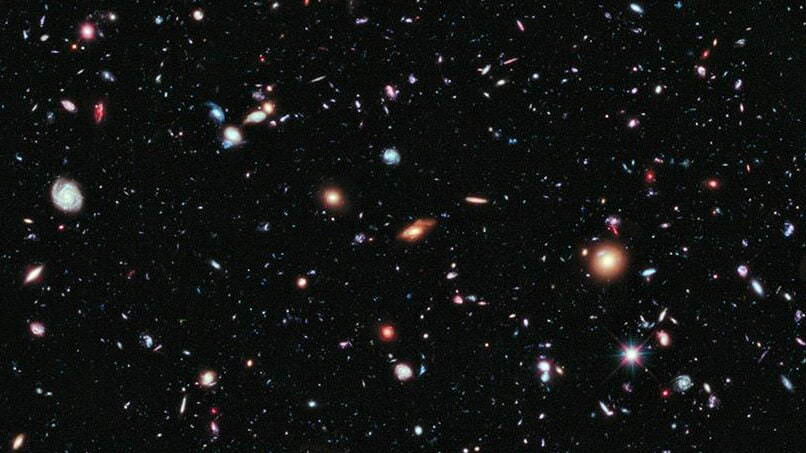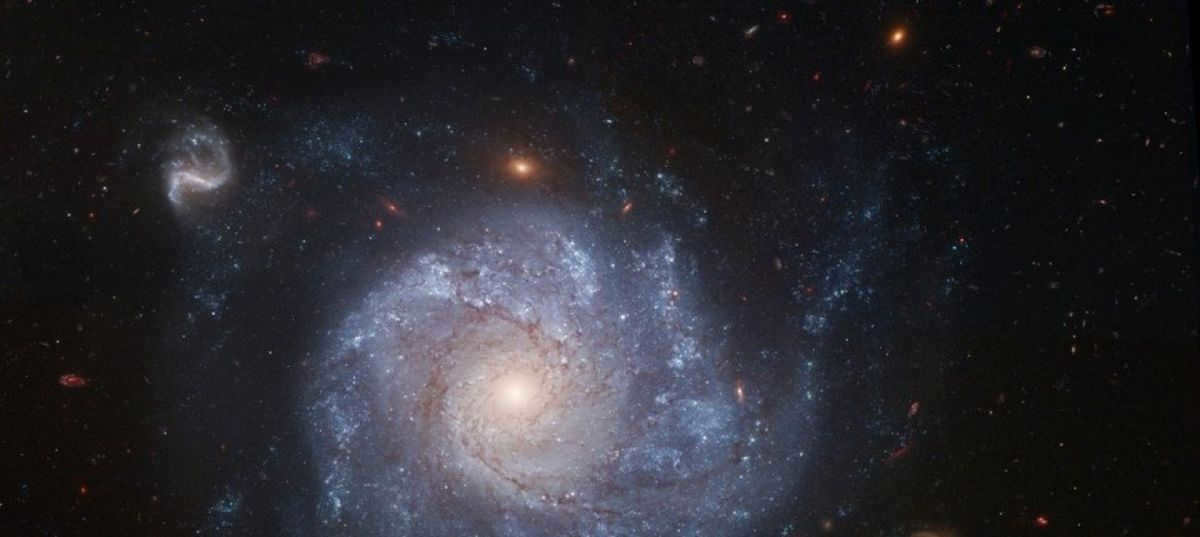
The concept of what lies beyond the edge of the universe has intrigued both scientists and the general public who have a fascination with the enigmas of the cosmos. The portion of the celestial sphere that is observable to us during the night is merely a fraction of the vast expanse of cosmic space. The scientific community continues to engage in lively discussions regarding the location of the Universe’s boundary and whether such a boundary even exists.
There are numerous speculations regarding the potential boundaries of the universe. However, the primary issue with all of these hypotheses is that they cannot be conclusively proven or disproven. The limitations of modern space technology prevent us from fully exploring such an expansive expanse. As a result, the scientific community continues to propose various hypotheses regarding the nature of the universe’s edge and what lies beyond. In this article, we will delve into some of the most popular hypotheses.
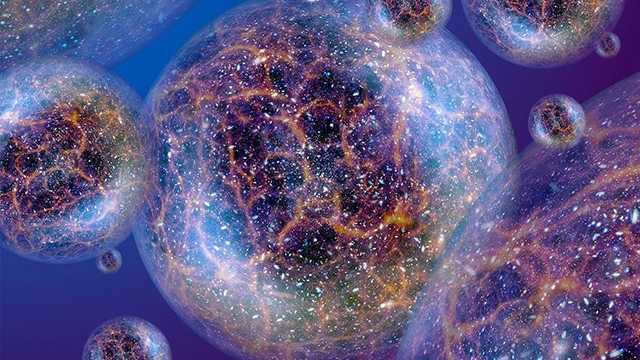
The visible Universe
Before we delve into speculation about what lies beyond the Universe, it is important to first understand the extent of its boundaries. Naturally, it is impossible for us to know the true limits of outer space, but we do have a clear understanding of where the observable portion of the Universe, known as the Metagalaxy, comes to an end.
The observable space refers to the region of space that our technology is capable of detecting the scattered relic radiation. The areas where this detection ends are considered to be the boundaries of the observable space. Relic radiation is the energy that was released during the Big Bang and has been propagating throughout the Universe ever since. The approximate radius of the Metagalaxy is 46 billion light years.
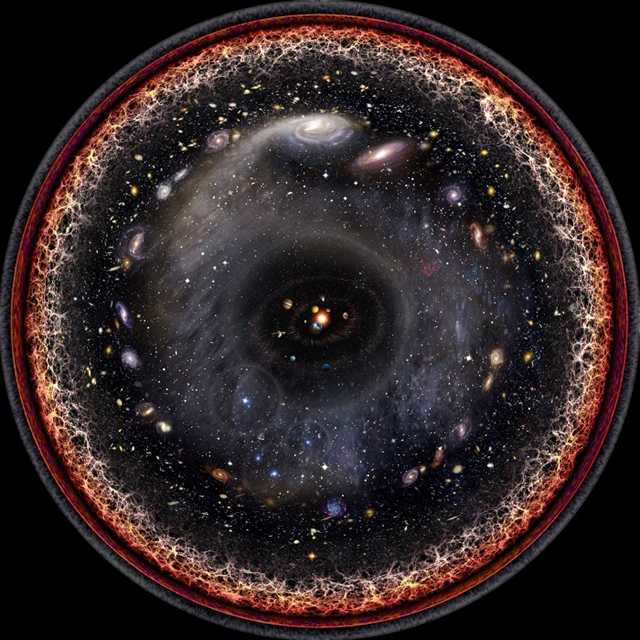
However, there are two contrasting viewpoints among scientists regarding the observable universe. One perspective suggests that there exist other systems beyond the Metagalaxy, and our current perception only encompasses a fraction of the immense cosmos. Conversely, another viewpoint asserts that the Metagalaxy represents the entirety of the Universe, with nothing existing beyond it.
In addition to the Metagalaxy, there is a concept known as the Hubble region, which refers to the portion of observable space that we can detect using our technological capabilities. Its expanse spans approximately 13.8 billion light years. Given that the Universe is roughly the same age, it follows that light from its more remote regions has not yet reached us. In due course, the Hubble region will expand, leading to an increased number of star systems available for observation.
Exploring the concept of a multiverse
While we have already studied and defined the observable boundaries of the Universe, it is worth considering what lies beyond them. Is it possible that there are other regions similar to outer space in proximity to our own? Could it be that our Universe is just one of many, existing alongside countless others?

The hypothesis of the Multiverse suggests that each individual universe is a unique entity created during the occurrence of the Big Bang. These universes exist in the form of bubbles made up of matter. They go through a cycle of birth, evolution, and eventual death, only to be replaced by new universes. Stephen Hawking, a renowned physicist, is one of the notable proponents of this hypothesis. It is also supported by Neil Degrasse Tyson, a popular astrophysicist and science communicator, as well as David Deutsch, one of the pioneers in quantum computing. Additionally, Alan Harvey Guth, the physicist who proposed the concept of cosmic inflation, and Brian Randolph Green, a prominent advocate for string theory, also lend their support to this hypothesis.

Within the Multiverse, an endless array of “bubbles” exist, each operating under the same laws of nature but existing in distinct states. These Parallel Universes are completely independent from one another and have minimal interaction.
Currently, this hypothesis lacks a solid foundation in science. It posits the idea that there may be something beyond our universe, but it cannot be proven or tested experimentally. As a result, it remains more of a philosophical inquiry than a scientific one. However, if this assumption were to be validated, it would imply the existence of numerous other universes, each with finite sizes and lifespans.
Complete emptiness
The universe is continuously expanding, a fact that has been officially acknowledged by the modern scientific community. However, whether this expansion will continue indefinitely and the extent to which the universe might expand remain unknown.
Some theorists propose that our world has defined boundaries, beyond which there is nothing. According to this hypothesis, when the universe reaches its end, there exists only a state of absolute void, where none of the laws of physics are applicable. This void is devoid of light, and it cannot be perceived or observed. Time and space do not exist within this void. The hypothesis suggests that the cosmos is akin to a closed sphere, floating within an infinite emptiness where none of the familiar physical parameters hold true.
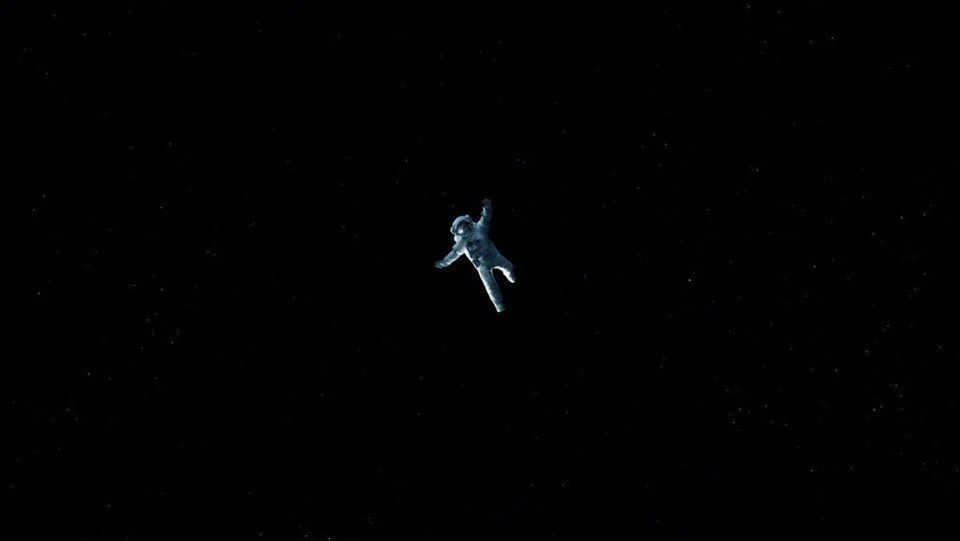
It is quite challenging for the human mind to comprehend and accept the concept of complete emptiness. Even if the theory holds true, visualizing what absolute nothingness would actually look like is beyond our imagination. Would it be a black void? Or perhaps white? Could it resemble a matrix? While we can speculate endlessly, it is highly unlikely that we can truly envision it.
A hologram
Stephen Hawking’s final piece of work, published posthumously, puts forward a fascinating proposition. It proposes that our universe could potentially be a holographic projection of an ancient plane. The birth of the universe, the Big Bang, gave rise to this plane, and our reality is merely a two-dimensional representation of it. In fact, our perception of three-dimensional space is nothing more than an illusion. All aspects of our spacetime and the laws of physics are also projections, a distortion of what is truly real.
Understanding the hypothesis is a daunting task, as it is intricate and difficult to comprehend, much less validate. Should it unexpectedly be proven to be true, it would signify that the laws of nature that govern our three-dimensional world are fundamentally flawed and merely a distortion. If there does exist a primary plane beyond our universe, the arrangement and organization of everything within it is beyond our capacity to imagine. Like the concept of absolute void and the existence of the Multiverse, this theory, along with countless others, is more philosophical in nature than scientific. Ultimately, it is highly improbable that we will ever truly ascertain what lies beyond our universe.
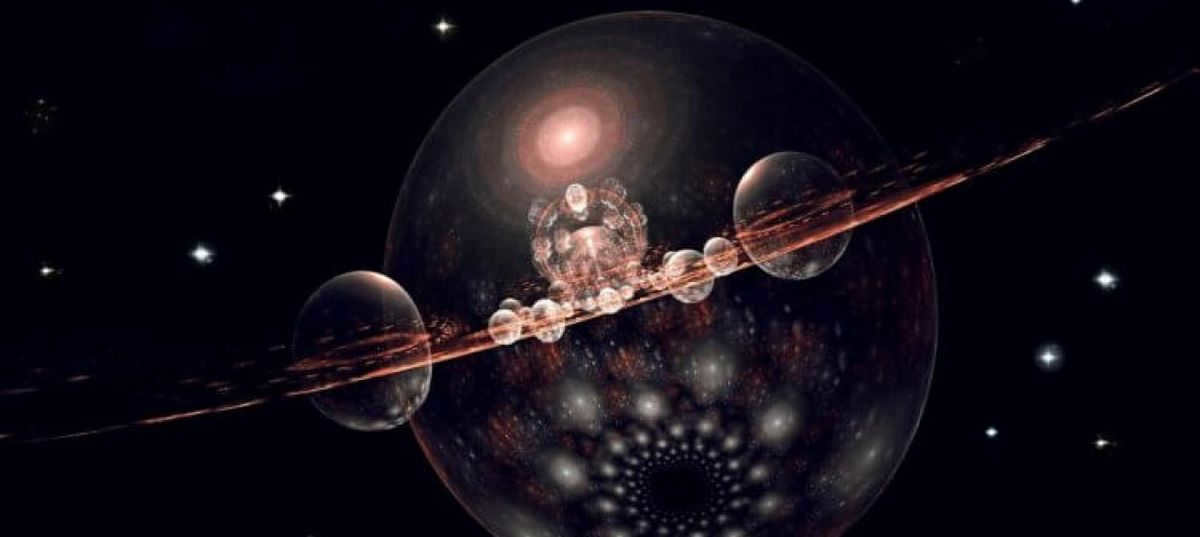
In our fast-paced modern society, burdened with the mundane complexities of everyday life, there are moments when we yearn to transcend not only the confines of our earthly existence, but also journey to the very brink of the Universe itself. A place where our earthly troubles cease to exist, replaced by the boundless expanse of the cosmos. Have you ever pondered upon the mysteries that lie beyond, at the edge of the Universe? And what does this notion of the “edge of the world” truly entail? Is it an impenetrable black barrier, an unfathomable abyss, or perhaps an infinite realm? Scientists have ventured to explore these enigmas, and today, we shall delve into their conjectures.
Sean Carroll, physics professor
The boundaries of the universe are non-existent. The only aspect we can discuss is the periphery of the observable universe, which represents the farthest distance that can be observed from Earth. In the event that the expansion of the Universe proceeds indefinitely, we will never be capable of perceiving its culmination, irrespective of its existence. This is due to the fact that when we gaze upon the most remote stars and planets, we are actually witnessing their past echoes, as light travels at a fixed speed. All entities situated at the extremity of the observable universe materialize to us as they appeared almost 14 billion years ago. Nevertheless, this cannot be categorized as the tangible boundary of the cosmos.
Our understanding of space is limited by the capabilities of modern technology, preventing us from seeing beyond the boundaries of the observable Universe. However, it is important to recognize that there exists a vast expanse of space beyond our current perspective. Presently, our observations reveal a relatively uniform cosmos, and this pattern is likely to persist. It is possible that the Universe takes the form of a sphere, presenting a potential boundary. Nonetheless, even within this spherical structure, space would lack physical limits as a sphere possesses no definitive starting point or endpoint.
Furthermore, it is crucial to acknowledge the multiverse theory, which suggests that the cosmos is not uniform and can exhibit significant variations across different regions. At this point in time, we have yet to provide concrete evidence for either scenario. Therefore, it is prudent to maintain a neutral stance and refrain from favoring any particular theory.
Joe Dunkley, professor of physics and astrophysical sciences
Based on our research, we propose the idea that the universe is without limits, continuously expanding or contracting into a spherical shape. Therefore, the fact that it may be enclosed does not imply the existence of boundaries. Let’s consider a doughnut as an example. Does the surface of a doughnut possess boundaries? Certainly not, but we understand that this surface is finite, correct? What does this suggest? It implies that we have the capability to traverse the entirety of the cosmos, maintaining a straight trajectory, and ultimately returning to our starting point. There is no definitive end or perimeter.
However, there is another aspect to consider – the boundary of the observable universe. This boundary is determined by the extent of our visual capabilities. It is located at the point where light has not yet reached us since the dawn of time. What lies beyond this boundary? It is highly probable that the same entities exist there as they do here: stars, planets, and galaxies.
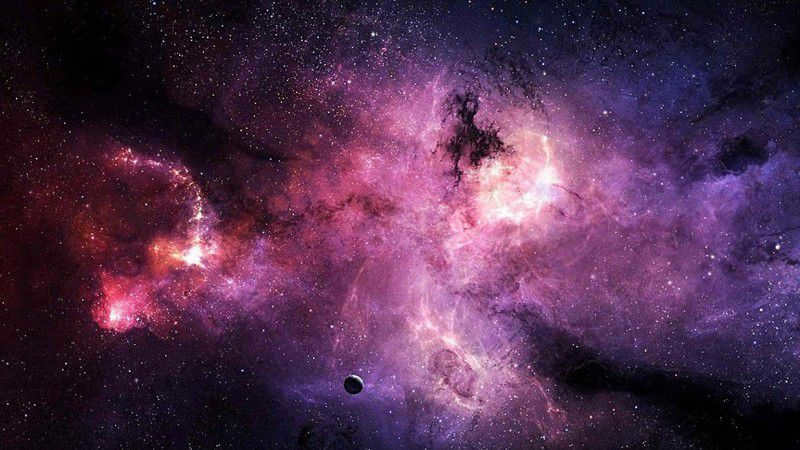
THE FINAL DISPERSION’S EXTERIOR
Jesse Shelton, a physics and astronomy associate professor.
What is currently occurring at the conclusion of the world? Unfortunately, this information remains unknown and will remain so. This is due to the fact that even if the illumination from that location were to travel towards us at this very moment, it would take billions of years to reach us. Consequently, our understanding of this subject is limited to mere speculation.
Based on our current observations of outer space, it is highly likely that similar events are transpiring at the outermost reaches of the universe. If one were to be present in that location at present, they would likely not perceive any substantial disparities. The outermost edge of the universe does not represent its finality, but rather its continuation. In fact, there may be even more stars, galaxies, and potentially life forms pondering the same question at this very moment.
Michael Troxel, assistant professor of physics
It is highly probable that the universe does not possess a definitive endpoint or boundary. Nevertheless, it may feature numerous points that could be considered as edges.
If the universe is unrestricted in all directions, then it is infinite. Conversely, if it is a closed system, resembling a sphere, it inherently becomes finite, but still lacks any boundaries. Because, as we traverse the surface of the sphere, we will ultimately arrive back at the initial point of our expedition.
In our understanding, there are two boundaries to the universe. According to the general theory of relativity, the maximum speed of any event in the cosmos is the speed of light, and this principle applies universally. We have come to recognize that the universe is continuously expanding in all directions, and this expansion is accelerating over time. Consequently, when we observe an object in the depths of space, it takes a certain amount of time for its light to reach Earth. However, due to the ongoing expansion of the universe, the distance that light must traverse to reach us is also increasing with time.
If we were to consider the maximum distance that light could travel to us from the very beginning of time, shortly after the Big Bang, it would be an astonishing 47,000,000,000,000,000,000,000,000,000,000 light years. This incredible distance is even given its own name: the cosmological horizon.
Now, let’s approach the situation from a different angle and pose a new question: what is the furthest distance at which information can be sent and received, assuming it travels at the speed of light? Here, things become even more fascinating, as space is not expanding at a constant rate, but rather at an ever-accelerating pace.
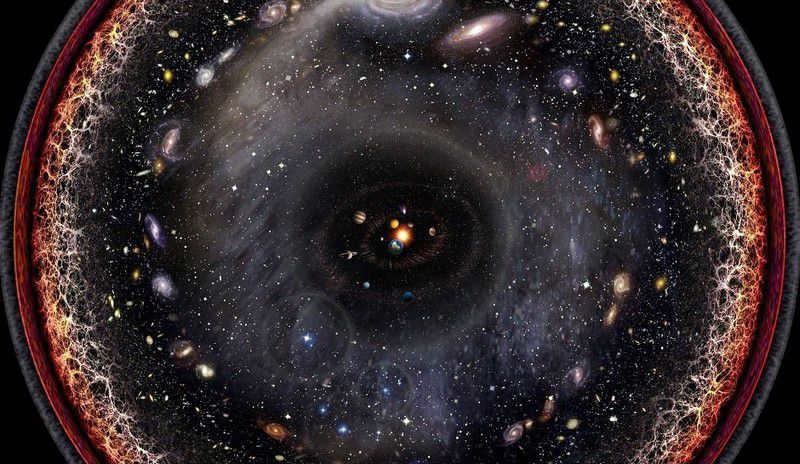
Abigail Weregg, assistant professor of cosmological physics
When observing the depths of space with telescopes based on Earth, we are able to see the light that travels to us from those distant regions. The length of time it takes for that light to reach us increases as we look further into those depths. As a result, when we observe distant stars, we are actually seeing them as they appeared many years ago, not as they are in the present day. The longer we observe these stars, the further back in time we are able to go. Eventually, we can even glimpse the early stages of the universe, a few thousand years after its formation. However, our observation is limited to this point, as the universe before that time was incredibly hot and dense, devoid of stars, planets, and even atoms. During this period, photons of light were constantly bouncing around in a hot plasma, attempting to find something to latch onto and escape from it.
Even with the most advanced Earth-based telescopes, it is impossible to witness such a phenomenon. This is why it is referred to as the edge of the Universe, the observable Universe. To put it simply, it is the horizon. Beyond this point, we are unable to see or approach whatever lies there. However, even the edge of the Universe is not immune to the passage of time and the Universe’s expansion, causing it to constantly shift. If we were able to observe the Universe from another planet, it is highly likely that we would witness the same cosmos, with identical stars, extending only as far as time allows, constrained by the speed of photons that have journeyed to us from the very moment of the Big Bang itself, and of course, the ongoing expansion of the cosmos.
Is it possible for us to perceive this horizon? It is highly unlikely. Our vision is limited to observing the aftermath of the Big Bang, rather than its current state. Nevertheless, research findings unanimously declare that the entire observable Universe appears to be remarkably similar. It consists of the same stars, galaxies, and cosmic voids.
The expanse of the universe surpasses the minuscule portion that we are able to observe from our planet. Thus, it is highly probable that there is no definitive boundary to the universe. Instead, it is comprised of space-time, which continues to expand incessantly.

The inquiry regarding the nature of what exists beyond the bounds of the universe not only preoccupies the intellects of scientists, but also captures the attention of individuals unrelated to the field of science. Those numerous celestial bodies that adorn the nocturnal firmament represent a minuscule fraction of the vast expanse of outer space. The precise demarcation of the Universe remains a subject of contention among astronomers due to the unfathomable distances and scales involved, which defy comprehension.
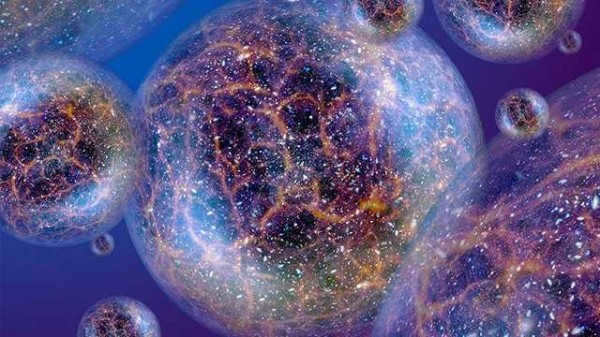
There have been numerous propositions regarding the limits of the cosmos. However, it is unfeasible to entirely refute or confirm any of them – as human advancements and the sheer confines of cognition are inadequate to investigate such an immense expanse. Meanwhile, as the scientific community grapples with this unresolvable enigma, we will examine the most captivating and astounding hypotheses concerning the whereabouts of the Universe’s boundary.
First and foremost, let us determine the limits of the detectable cosmos. This refers to the portion of the vast expanse beyond which we are able to detect radiation. Simultaneously, the very entities emitting these signals may already exist outside the confines of this spatial realm. It is simply a matter of the radiation emitted by these celestial entities having to traverse vast distances to reach our planet.
The area of the Universe known as the Metagalaxy is referred to as such. The outermost point of this region is considered to be the surface where relic radiation from the Big Bang was last scattered. This radiation, which represents the heat energy released during the creation of the Universe, continues to disperse throughout space to this day. The estimated radius of the Metagalaxy is 46 billion light years. What lies beyond this boundary of the Universe remains a mystery that is yet to be unraveled. In the field of astronomy, there are two conflicting viewpoints regarding the nature of the Metagalaxy. Some scientists propose that it is merely a small portion of space, with other star clusters and systems existing beyond its borders. On the other hand, there are those who argue that the Metagalaxy encompasses the entirety of the Universe.
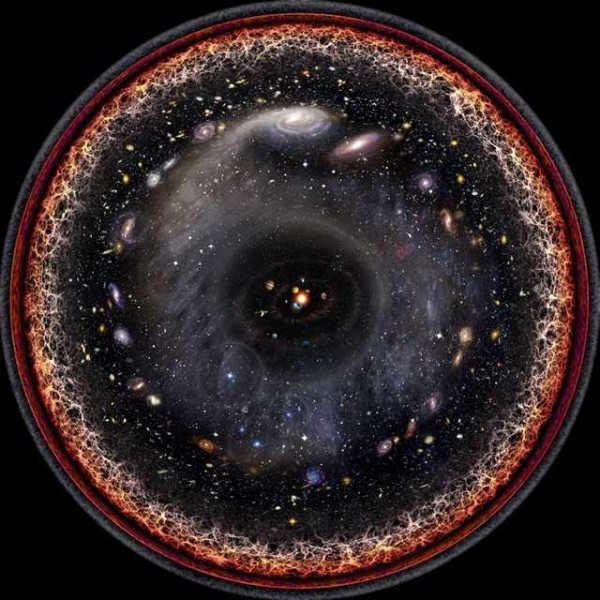
Another idea that characterizes the limits of the detectable Universe is known as the Hubble sphere. This region of the Metagalaxy experiences space expansion at a rate lower than that of light. The Hubble sphere has a diameter of 13.8 billion light years, which is roughly equivalent to the age of the universe since the occurrence of the Big Bang. Over time, all the galaxies we currently observe will eventually surpass the confines of the Hubble sphere. As a result, this boundary of the universe cannot be regarded as finite.
The Multiverse
So, it has been established that the observable cosmic space possesses well-defined boundaries. However, what lies beyond the confines of the universe? And perhaps, our universe is not the sole one?
Based on this assumption, the Universe represents merely one of countless worlds within an infinite array. Similar to bubbles, these worlds emerge from the dense matter of primordial substance during the occurrence of the Big Bang. Each world undergoes its own evolutionary stages and eventually perishes, giving way to new realms.
The advocate of the Multiverse theory was the renowned British theoretical physicist, Stephen Hawking.
Moreover, this notion of parallel worlds garners support from other space explorers such as Brian Green, Neil Tyson, David Deutsch, and Alan Guth.

Based on Everett’s multi-world interpretation, each “universal bubble” operates under the same laws of nature and constant values, but exists in different states. As a result, parallel worlds exist and evolve independently of one another, occasionally intersecting.
The concept of the Multiverse is not inherently scientific, but rather philosophical, as it cannot be proven or disproven through scientific experimentation. However, using this hypothesis, we can speculate that our universe has boundaries and a finite lifespan.
Absolute Vacancy
It has been officially acknowledged that the expansion of the Universe is occurring. However, it remains uncertain whether there is a limit to this expansion of space.
As per the postulations of certain theoretical physicists, the universe does indeed possess boundaries. Beyond these boundaries lies an absolute void or NOTHINGNESS. The laws of physics do not operate within it, it is impervious to light and lacks tangibility. The void is devoid of spatial and temporal constraints. In this manner, the universe resembles a ball adrift in infinite space, devoid of any physical parameters.
Such a theory is exceedingly perplexing to comprehend. The human mind is unable to fully grasp the concept of absolute vacancy that exists beyond the universe.
The Great Projection
In Stephen Hawking’s final masterpiece, released posthumously, he presents an incredibly intriguing hypothesis. The central idea is that our universe is a holographic representation of a fundamental plane. This plane, in turn, was created as a consequence of the Big Bang. Essentially, our reality is two-dimensional, and the perception of depth is merely an illusion. The spatial and temporal properties of the Universe are a distorted projection of the fundamental plane.
Regrettably, validating the veracity of this hypothesis proves unattainable. This is due to the fact that if our reality exists in a two-dimensional plane, the laws formulated for three-dimensional space are rendered ineffective. Other speculations concerning the existence beyond the bounds of the Universe remain unverified. Consequently, these scientific hypotheses transition into the realm of philosophical contemplation. It seems highly improbable that humanity will ever succeed in uncovering the truth in this intricate matter.
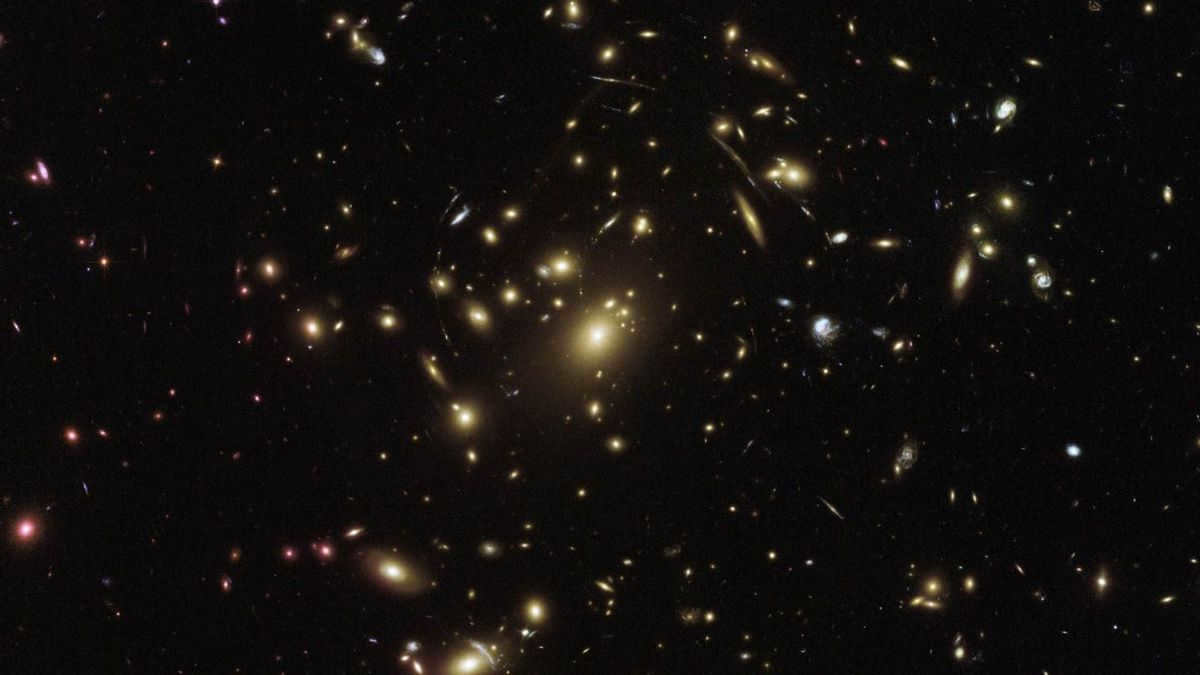

Let’s attempt to uncover the solution alongside Paul M. Sutter – a renowned astrophysicist hailing from the Flatiron Institute, esteemed host of the acclaimed program “Ask the Astronaut” and space radio, as well as the accomplished author of the thought-provoking book “How to Perish in Outer Space”.
This particular inquiry stands as one of the most captivating queries one could pose, a question that has captivated humanity since time immemorial: what lies beyond the confines of our collective knowledge? What lies past the boundaries delineated by our maps? In its most definitive form, the question becomes: what lies beyond the expanse of the universe? The response to this query… well, it is indeed exceedingly intricate.
In order to address the question of what lies beyond the confines of the universe, we must first establish a precise understanding of what we mean by “the universe”. If we interpret this term as encompassing everything that can potentially exist within the expanse of space and time, then there can be no existence beyond the universe. Even if we were to conceive of the universe as having a finite size and imagine something existing outside of that boundary, it would still be considered part of the universe.
Even if the universe were to consist of an amorphous, boundless void devoid of any substance whatsoever, it would still be classified as an entity and fall within the category of “all things” – and thus, by definition, would be considered a component of the universe.
Related articles:
If the universe is boundless in size, there is no need for concern about the aforementioned query. The Universe, encompassing everything that exists, is immeasurably vast and lacks any confines, thus making it futile to even discuss an external realm.
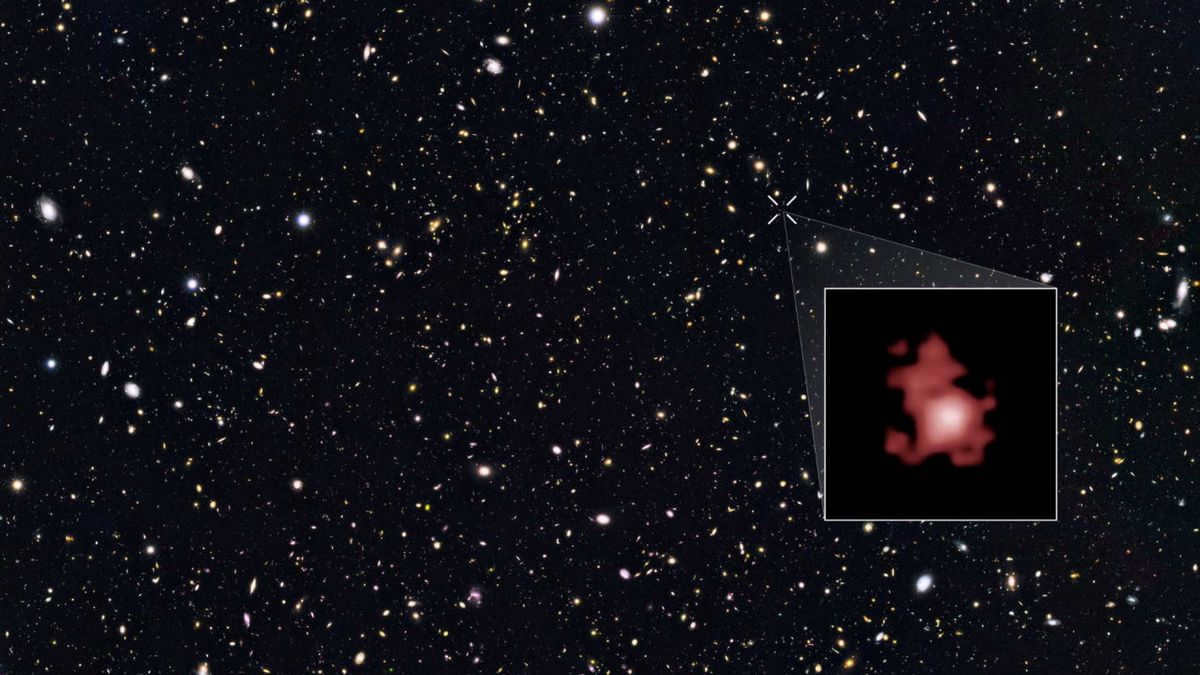
Nevertheless, the part of the Universe that we can observe does possess an external region. The present breadth of the observable universe is approximately 90 billion light years. Moreover, it is reasonable to assume that there exist numerous additional stars and galaxies beyond that limit.
However, it is difficult to determine precisely what exists in that expanse.
Cosmologists are uncertain about whether the universe is infinitely vast or simply extremely vast. In order to gauge the size of the universe, astronomers focus on its curvature. The geometric curvature of the Universe on a grand scale provides insights into its overall structure. If the universe exhibits a perfectly flat geometry, it could potentially be boundless. However, if it possesses curvature, akin to the Earth’s surface, it would have a finite volume.
Presently, the current observations and measurements of the curvature of the Universe indicate that it is nearly, if not entirely, flat. This could lead one to believe that the universe is boundless and infinite. However, the reality is not quite so straightforward. Even in the scenario of a completely flat Universe, it does not necessarily mean that space is infinitely vast. To illustrate this concept, consider the surface of a cylinder. Geometrically, it is considered flat since parallel lines drawn on its surface will remain parallel (which is one of the criteria for determining “flatness”). However, a cylinder has a finite size and is not boundless. The same principle can be applied to the universe: it can possess perfect flatness while still being enclosed within itself.
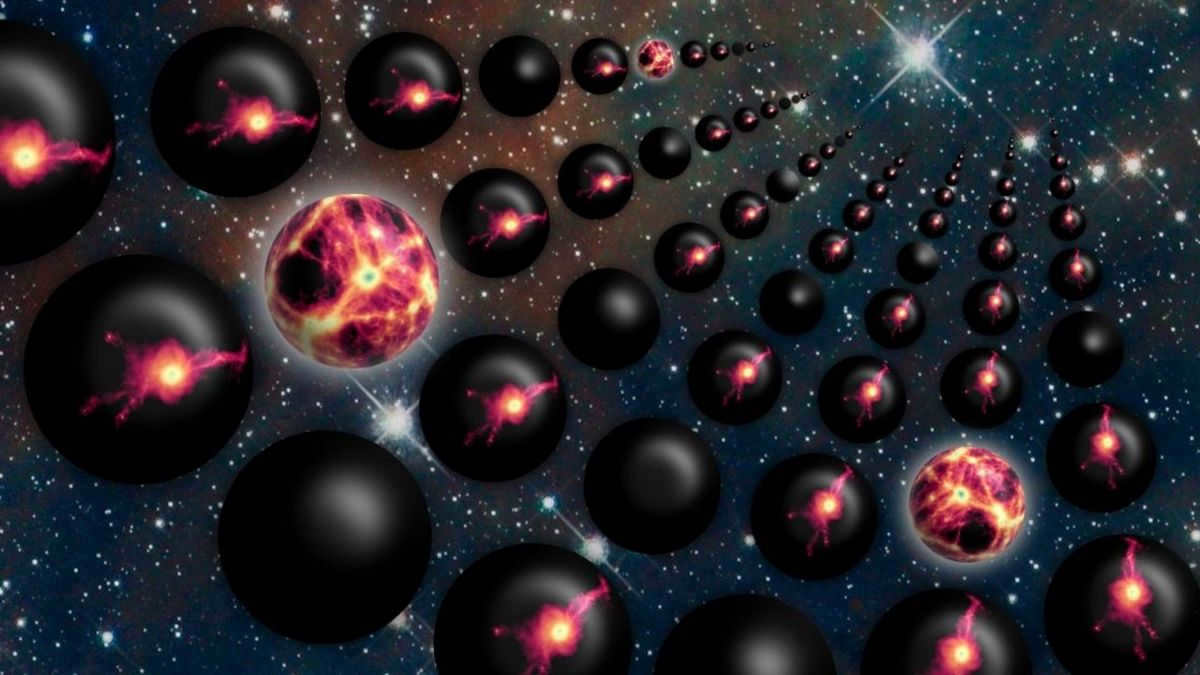
However, even if the universe is limited in size, it does not necessarily imply the existence of a boundary or an external region. It is possible that our three-dimensional universe is encompassed within a larger, multi-dimensional structure. This concept is well within the realm of some unconventional astrophysical models. However, at present, we lack the means to experimentally verify this notion.
Furthermore, I acknowledge that this concept may be perplexing, but even if the universe possesses a finite volume, it does not require a specific embedding within any external context.
It’s all a matter of perspective
Imagine the universe as a colossal sphere brimming with stars, galaxies, and a myriad of captivating astrophysical phenomena. Envision its appearance from a vantage point outside, like that of an astronaut observing the Earth from orbit.
However, the existence of the universe does not rely on this external viewpoint. The universe simply is. It is a mathematically consistent assumption to define a three-dimensional universe without the need for an exterior. When you picture the universe as a sphere suspended in the void, you may be deceiving yourself, but such a visual representation is not required by mathematics.
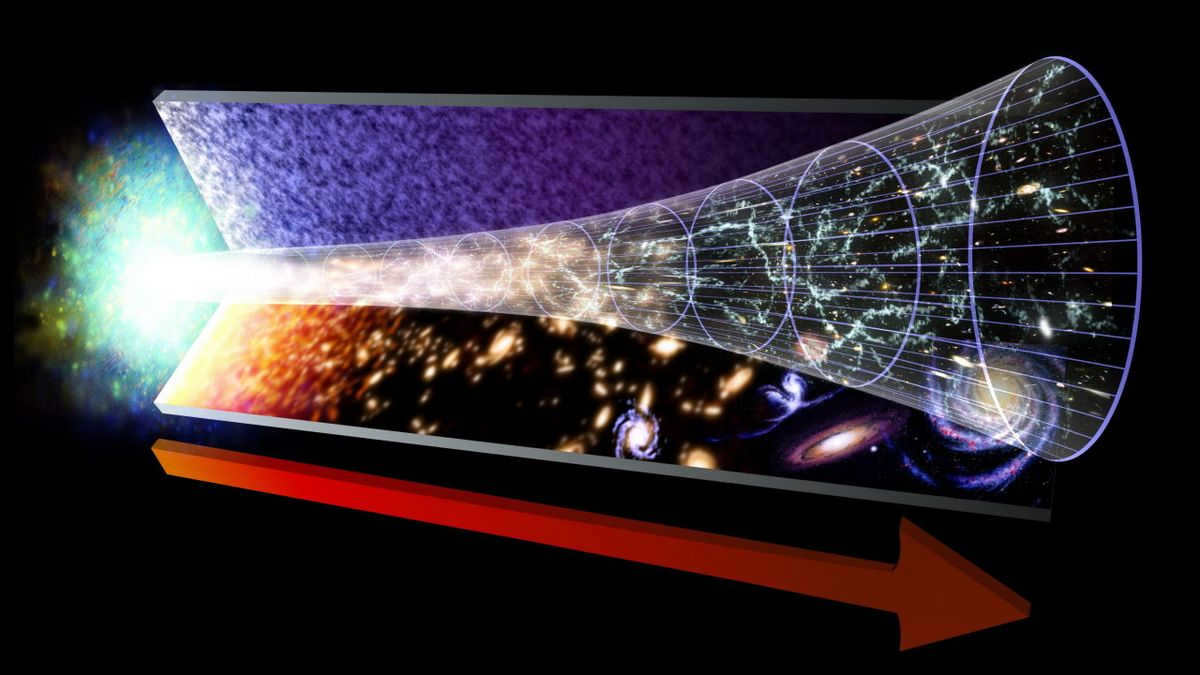
Undoubtedly, it appears implausible that there exists a bounded cosmos beyond which there is absolute nothingness. And not even “nothingness” in the sense of vacant void, but rather nothingness that is entirely mathematically indeterminate. In truth, inquiring: “What lies beyond the boundaries of the universe?” is akin to asking, “What is the sound produced by the color purple?” It is a nonsensical query because it attempts to merge two unrelated concepts.
It is plausible that our universe possesses a periphery. However, on the other hand, it is likely that it does not, as there is no mathematical description of a universe that necessitates an external observer.
If you find all of this to be intricate and bewildering, fret not. The primary purpose of developing intricate mathematics is to equip ourselves with tools that enable us to comprehend concepts that surpass our imagination. And that is one of the possibilities that modern cosmology offers: it grants us the ability to explore the unfathomable.
Greetings, I am the creator and administrator of UniverseTodayRu. My passions lie in the realms of astronomy, physics, and mathematics. In 2010, I completed my studies at the Faculty of Physics and Mathematics at Pushkin BrSU. For observations and photography, I utilize the Sky-Watcher BK 909EQ2 and Canon EOS 1100D. During my leisure time, you’ll often find me gazing at the stars, pondering the great unknown. In addition to the exact sciences, I have a keen interest in all things related to software and information technology.
What is beyond the boundaries of the universe remains a perplexing question that eludes human comprehension. The complexity arises from the need to first establish the parameters defining its edges, a task far from straightforward.
The prevailing notion considers solely the observable Universe, whereby dimensions are dictated by the speed of light, as our vision is limited to the light emitted or reflected by celestial bodies. Gazing beyond the furthest reach of light that has journeyed throughout the entire existence of the cosmos remains an impossible feat.
While the universe continues to expand, its vastness remains finite. This expanse is often referred to as the Hubble volume or sphere. It is unlikely that humans will ever have the ability to comprehend what lies beyond these boundaries. Therefore, for all scientific exploration, this is the only realm that will require interaction. At least for the foreseeable future.
Uniqueness
It is common knowledge that the Cosmos is vast. How far does it extend in millions of light years?
Astronomers are closely examining the cosmic microwave background radiation, which is the residual glow from the Big Bang. They are searching for a correlation between events occurring on one side of the celestial sphere and events occurring on the opposite side. However, thus far, there is no indication of any similarity between these two areas. Consequently, it can be concluded that for 13.8 billion years in both directions, the universe does not replicate itself. This is the amount of time it takes for light to travel to at least the visible boundary of this expanse.
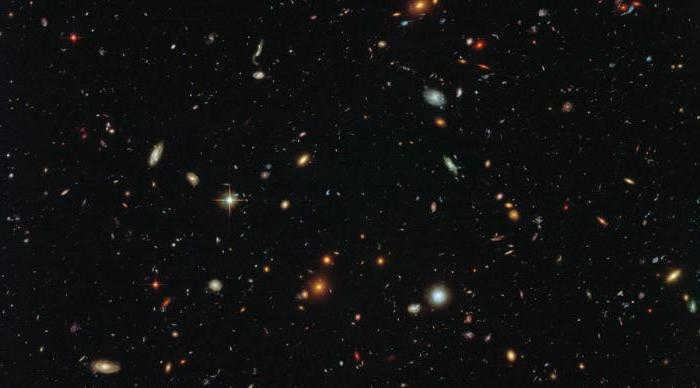
We are still pondering the question of what lies beyond the confines of the observable universe. Astronomers hypothesize that the cosmos stretches infinitely. Within this vast expanse, “matter” (comprising energy, galaxies, etc.) is distributed in the same manner as in the observable universe. If this supposition holds true, then various peculiarities arise regarding what exists at the outermost reaches.
It is not solely other celestial bodies that reside outside the Hubble volume. Anything that can conceivably exist may be found there. If one ventures far enough, they might even encounter another solar system with an Earth that is indistinguishable in every aspect, except that the individual had porridge instead of eggs for breakfast. Alternatively, they may have skipped breakfast altogether or, perhaps, they rose early and committed a bank robbery.
According to cosmologists, there is a belief that if one were to venture far enough, they would come across another Hubble sphere that is remarkably similar to our own. The majority of scientists hold the belief that the universe, as we understand it, has boundaries. The enigma of what lies beyond these boundaries remains the greatest mystery.
The cosmological principle
This principle states that irrespective of an observer’s location or direction, they will witness the same view of the universe. It is important to note that this principle does not apply to investigations on a smaller scale. The uniformity of space is a result of the equality of its points. This phenomenon can only be observed on the scale of a galaxy cluster.
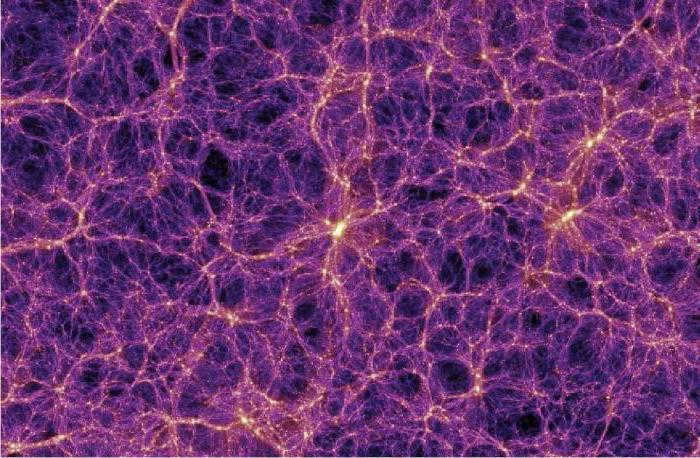
The idea similar to this was initially suggested by Sir Isaac Newton in 1687. Subsequently, in the 20th century, other scientists’ observations confirmed the same notion. Logically, if the entire Universe originated from a single point in the Big Bang and then expanded, it would remain relatively uniform.
The distance at which we can observe the cosmological principle and find this apparent even distribution of matter is approximately 300 million light years away from Earth.
However, the situation changed in 1973 when an anomaly that contradicts the cosmological principle was discovered.
The Incredible Attractor
Scientists have made a remarkable discovery 250 million light-years from Earth, in the vicinity of the Hydra and Centauri constellations. They have stumbled upon a colossal concentration of mass, so immense that it can be likened to tens of thousands of Milky Way masses combined. This extraordinary phenomenon is known as a galactic supercollision.
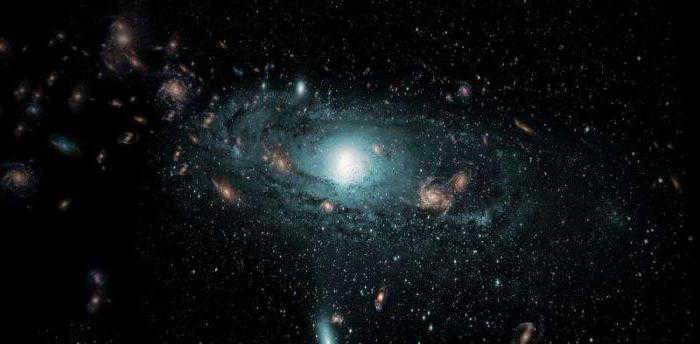
The object known as the Great Attractor possesses such a formidable gravitational force that it exerts its influence on other galaxies and their clusters for distances spanning hundreds of light years. For quite some time, the Great Attractor has remained one of the most enigmatic phenomena in the realm of the cosmos.
In the year 1990, it was uncovered that the movement of immense galaxy clusters, referred to as the Great Attractor, tends towards a different region of space, one that is situated beyond the outermost reaches of the Universe. At present, this phenomenon can still be observed, despite the fact that the anomaly itself is located within a region known as the “avoidance zone”.
According to the principle of Hubble’s Law, it is expected that all galaxies would move away from each other in a uniform manner. However, a new discovery in 2008 revealed an intriguing phenomenon.
The Wilkinson Microwave Anisotropy Probe (WMAP) made an interesting observation of a significant cluster of galaxies moving in the same direction, with speeds reaching up to 600 miles per second. Surprisingly, they were all converging towards a specific region of the sky located between the constellations Centauri and Sails.
This phenomenon was named “dark energy” as it could not be explained by any known factors within the observable universe. It is believed to be caused by an external force or entity that exists beyond our current understanding. The nature of this dark energy is still a subject of speculation and further investigation.
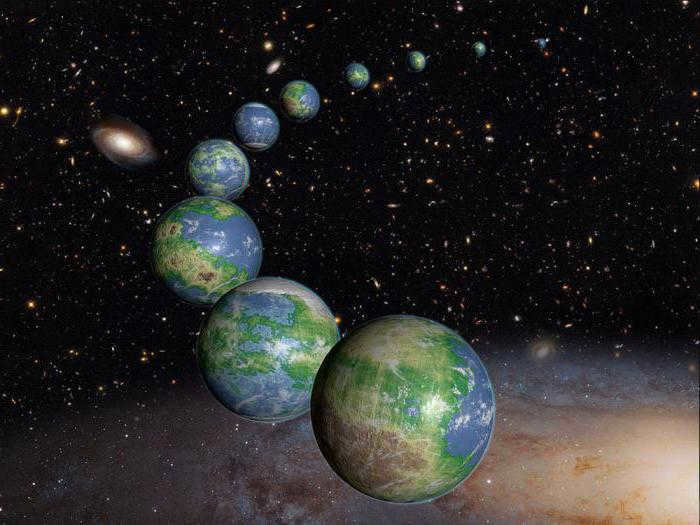
If clusters of galaxies are being drawn towards an enormous black hole, it is likely that their movement is accelerating. The presence of dark energy suggests a consistent velocity of celestial objects over billions of light years.
One potential explanation for this phenomenon is the existence of massive structures located beyond the boundaries of the known universe. These structures possess a significant gravitational influence that can account for the observed phenomenon. While there are no colossal structures within our observable universe that possess enough gravitational force to explain this phenomenon, it does not rule out the possibility of their existence beyond our observational capabilities.
That would imply that the composition of the Universe is not uniform. Regarding the formations themselves, they have the potential to take on a myriad of forms, ranging from conglomerations of physical substance to ethereal energy existing on scales that stretch the limits of human imagination. There is even the intriguing possibility that they serve as conduits for gravitational forces emanating from alternate universes.
Infinite Bubbles
Discussing something beyond the Hubble sphere may not be entirely accurate, as it still maintains the same structure as the Metagalaxy. The “Unknown” abides by the same physical laws and constants as the Universe. There is a hypothesis that the formation of bubbles within the fabric of space was triggered by the Big Bang.
Immediately following the Big Bang, prior to the inflation of the Universe, there existed a sort of “cosmic foam” comprised of a collection of bubbles. One of these entities experienced a sudden expansion, eventually evolving into the familiar Universe we know today.
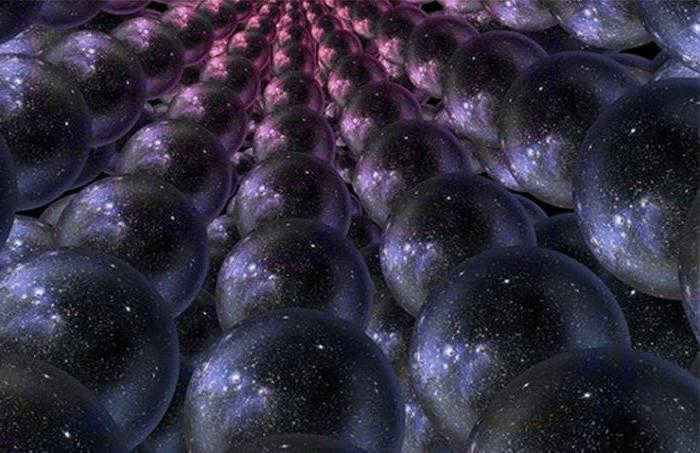
However, what emerged from the other bubbles? Alexander Kashlinsky, the leader of the team at NASA that made the discovery of “dark energy,” stated, “If one travels far enough, they can observe structures that exist beyond the bubble, beyond the universe. These structures would induce movement.”
Therefore, “dark energy” is regarded as the initial proof of the existence of an alternate Universe, or perhaps a “Multiverse.”
Each bubble represents a region that has ceased to expand alongside the remainder of space. It has developed its own unique set of laws, constituting its own Universe.
A mysterious phenomenon in the universe
According to the innovative theory proposed by physicist Lee Smolin, each black hole in the vast expanse of the Metagalaxy has the power to give rise to a brand new one. It is truly mind-boggling to fathom the sheer number of these enigmatic entities scattered throughout the Universe. Within the depths of each black hole, the laws of physics take on a completely different character compared to its predecessor. This groundbreaking hypothesis was first introduced in 1992 within the pages of the seminal book, The Life of the Cosmos.
When stars from all corners of the cosmos get drawn into these cosmic voids, they undergo an unimaginable compression, resulting in densities of unparalleled extremity. Under such extraordinary circumstances, this cosmic space undergoes a cataclysmic explosion, giving birth to a whole new universe, distinct from its original counterpart. The point of singularity within the black hole, where time comes to a halt, serves as the genesis of the colossal phenomenon known as the Big Bang, giving rise to the birth of a brand new Metagalaxy.
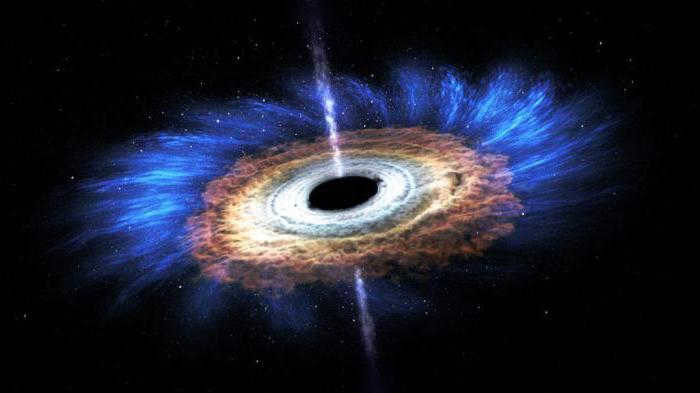
Inside the collapsed black hole, the extreme circumstances create minor, unpredictable variations in the fundamental physical forces and parameters within the offspring Universe. Each offspring Universe possesses distinct characteristics and parameters compared to its progenitor.
The presence of stars is an essential requirement for the genesis of life. This is because stars are responsible for the production of carbon and other complex molecules that are vital for supporting life. Therefore, both the formation of living beings and the Universe necessitate similar conditions.
One criticism of cosmic natural selection as a scientific hypothesis is the lack of direct evidence for it at this point. However, it is important to consider that in terms of belief, it is just as valid as the proposed scientific alternatives. There is currently no evidence for what exists beyond the universe, whether it be the Multiverse, string theory, or cyclic space.
Multiple Parallel Universes
Although the concept may seem irrelevant to modern theoretical physics, the existence of the Multiverse has long been considered a viable scientific possibility. However, it continues to spark intense debate and controversy among physicists, as it challenges the traditional notion of the number of Universes in the cosmos.
It is important to note that the Multiverse is not a theory in itself, but rather a consequence of our current understanding of theoretical physics. This distinction is crucial. The concept did not simply materialize out of thin air; it emerged from the principles of quantum mechanics and string theory, among other current teachings.
The concept of the multiverse and its relation to quantum physics
The famous thought experiment known as “Schrödinger’s Cat” is well-known to many. It serves to highlight the limitations of quantum mechanics, as pointed out by Erwin Schrödinger, an Austrian theoretical physicist.
In this experiment, Schrödinger proposes the idea of imagining an animal enclosed within a sealed box. Until the box is opened, the animal exists in a superposition of two states: alive and dead. It is only upon observation that one of these states is realized. This thought experiment illustrates the absence of a state that simultaneously encompasses both life and death.
While this may seem unfathomable to our human perception, it serves to highlight the complexities of the quantum world.
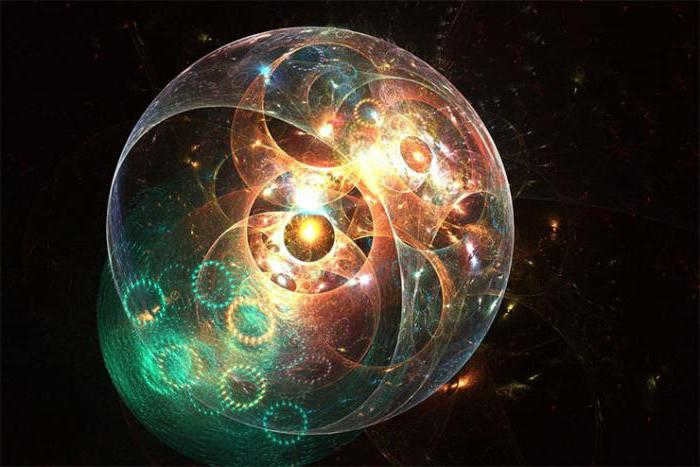
However, in the strange realm of quantum mechanics, this becomes a reality. The quantum state encompasses an immense space of potentialities. Mathematically, a quantum mechanical state can be described as the sum, or superposition, of all possible states. In the case of Schrödinger’s Cat, the experiment exists in a superposition of both “dead” and “alive” states.
But how can we make sense of this in a practical way? One popular interpretation is to view these possibilities in a manner where the only “objectively true” state of the cat is the one that is observed. However, another perspective is to acknowledge that all of these possibilities are indeed true, existing within separate universes.
What is String Theory?
String theory is a groundbreaking concept that holds great promise in the quest to unify quantum mechanics and gravity. This endeavor is challenging due to the elusive nature of gravity on microscopic scales, much like the enigmatic behavior of atoms and subatomic particles within the realm of quantum mechanics.
However, string theory proposes a fascinating idea – that all fundamental particles are composed of tiny, indivisible elements called strings. Remarkably, this theory encompasses all known forces of nature, including gravity, electromagnetism, and nuclear forces.
Yet, the mathematical framework of string theory necessitates the existence of at least ten physical dimensions. Unfortunately, we can only observe four dimensions in our everyday lives – height, width, depth, and time. Hence, these additional dimensions remain hidden from our perception.
In order to make sense of string theory and apply it to explain physical phenomena, scientists propose that these extra dimensions are “compactified” or curled up into incredibly tiny scales beyond our current detection capabilities.
The issue or uniqueness of string theory lies in the fact that there exist numerous ways to achieve compactification. Each of these methods yields a universe with distinct physical laws, including different electron masses and gravity constants. However, there are also significant criticisms towards the approach of compactification. Therefore, the problem remains unresolved.
Nevertheless, the obvious question arises: which of these possibilities do we inhabit? String theory does not offer a mechanism to determine this, rendering it impractical as it cannot be thoroughly tested. However, exploration of the Universe’s edge has transformed this flaw into a valuable trait.
The consequences of the Big Bang
In the early stages of the universe, there was a period of rapid expansion known as inflation, which helped explain the uniform temperature of the Hubble sphere. This expansion also predicted temperature variations around this equilibrium, which have been observed and confirmed by various spacecraft.
The exact details of inflation are still a subject of debate among physicists, but it is widely accepted as a valid theory. One of the implications of this theory is that there are other objects in the universe that continue to experience acceleration. Due to the fluctuation of spacetime at the quantum level, certain regions will never reach a final state, resulting in the perpetual expansion of space.
This mechanism gives rise to an infinite number of Universes. When combined with string theory, it suggests that each Universe may have a unique compactification of extra dimensions, resulting in different physical laws.
The concept of Multiverses, proposed by string theory and inflation, suggests that all universes exist in the same physical space and can potentially overlap. As a result, they are bound to collide, leaving observable traces in the cosmic sky. These collisions can manifest as cold or hot spots in the cosmic microwave background, as well as anomalous voids in the distribution of galaxies.
Since these collisions are expected to occur in specific directions, any interference would disrupt the overall homogeneity.

